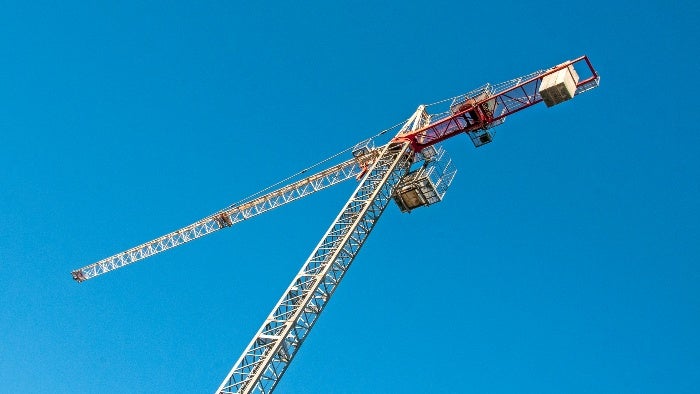A Complete Guide to Rigging Services and Riggers
When transporting commercial machinery or industrial equipment, you can’t turn to just any moving company—you need professional rigging services. From construction sites to manufacturing plants, riggers know how to relocate large, complex equipment safely and efficiently. Learn more about machine rigging services and how working with a professional can help prevent accidents, equipment damage, and costly downtime.

Who Are Riggers, and What Do They Do?
Riggers are trained to handle the movement of large, heavy, or delicate equipment. They use advanced rigging equipment to ensure machinery is moved safely within a building or between industrial locations. This process goes beyond simple lifting and moving—it involves meticulous planning, the proper equipment, and a knowledgeable rigger to ensure safety and efficiency.
Riggers are responsible for attaching loads to lifting devices, inspecting the rigging for safety, and directing crane operators or other machinery personnel as they move the loads. Once the equipment has been relocated, the rigger dismantles the rigging and conducts safety checks. Their work requires physical skill, knowledge of the machines they handle, and strict adherence to safety standards.
Types of Rigging Services
Every rigging project is different, with unique challenges related to the type of equipment being moved and the environment in which the work is performed. Different industries, from medical imaging to aerospace, rely on rigging to handle machinery transportation and installation. Consider these common types of rigging services:
Industrial rigging focuses on moving heavy machinery used in factories, construction, and manufacturing. Industrial rigging services facilitate large-scale projects involving equipment such as presses, commercial HVAC systems, and industrial tanks.
Crane and rigging services involve the use of cranes to lift heavy objects. Crane operators work closely with riggers to ensure the loads are properly secured and balanced during the lift.
Heavy equipment rigging transports heavy-duty items like hydroelectric dam generators, printing presses, and semiconductor equipment. This type of rigging involves crane operations and specialized moving vehicles like flatbeds or hydraulic trailers.
Machine rigging services include disassembling, moving, and reassembling equipment within a factory or construction site. Examples include relocating MRI machines, conveyor systems, or production lines from one part of a facility to another.
Examples of Rigging Equipment
Rigging professionals use various tools and equipment to perform their jobs safely and efficiently. Here are some of the tools they use to move heavy machinery:
Hydraulic gantries can lift hundreds of tons, enabling them to transport extremely heavy loads. They are often used in confined spaces where traditional cranes don’t fit.
Slings and shackles are common ways to secure loads, distributing the weight evenly to ensure the load remains stable during lifts.
Hoists and winches are used to lift loads vertically or horizontally across distances. They come in manual and powered versions to match the job requirements.
Forklifts are effective for moving smaller loads within a facility, often used in tandem with larger equipment.
Versa-lifts can handle heavy lifting with added mobility, making them ideal for tight spaces.
Fixed overhead cranes are indispensable for lifting extremely heavy or large equipment over relatively short distances. Mobile cranes have the added flexibility of transporting machinery further from its origin point.
Rigging Safety Measures
Safety should never be overlooked. Even the slightest error can lead to severe injuries, equipment damage, or project delays. Professional rigging companies follow strict safety protocols to mitigate risks, including:
Pre- and post-lift inspections: Riggers must carefully inspect all equipment before and after the lift. Pre-lift inspections include checking the lifting gear’s condition and ensuring a well-balanced load. Post-lift inspections include verifying that all equipment has been safely detached and that no damage occurred during the move.
Load testing: Before any full-scale lift, riggers conduct a test lift, where they raise the load a few inches off the ground to ensure everything is secure. If anything appears off, adjustments are made immediately.
Clear communication: Crane or forklift operators and ground personnel must maintain constant communication. Signals are often used to coordinate complex maneuvers.
Personal protective equipment (PPE): Workers must wear appropriate safety gear, including helmets, gloves, and harnesses, depending on the operation.
Environmental considerations: Outdoor rigging projects must account for weather conditions. Wind, rain, and temperature changes can impact the performance of rigging equipment, so riggers must plan accordingly.
Why Choose Us?
The next time you need to relocate industrial equipment, turn to LA Machinery Moving. We have over 30 years of experience serving the Los Angeles area, with a focus on machinery storage and transportation. Whether you’re relocating construction equipment across the state or reconfiguring your manufacturing facility, our fully equipped team can handle projects of any size. We take an efficient, customer-centric approach to minimize downtime and maximize safety. Contact us today to discuss your equipment rigging services.
